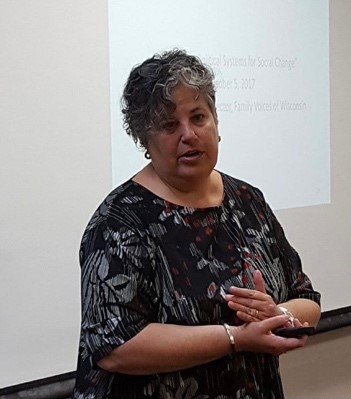FROM THE AGENCIES:
Emergency Planning Toolkit for Aging and Disability Networks
The new Capacity-Building Toolkit for Including Aging and Disability Networks in Emergency Planning (PDF, 114 pp), is intended to help aging and disability networks increase their ability to plan for and respond to public health emergencies and disasters. It was written by the National Association of County & City Health Officials and the Association of State and Territorial Health Officials, in partnership with the HHS Office of the Assistant Secretary for Preparedness and Response, and the Administration for Community Living (ACL). The toolkit is can be used by both those new to emergency planning and those with established emergency preparedness programs.
Other Resources to Help With Emergency Planning For People with Disabilities:
From ACL:
- An emergency information card (PDF, 1 p) that patients or caregivers can download and customize with information about the cardholder’s disability.
From the CDC:
- State emergency-preparedness tools and resources for people with disabilities, caregivers, emergency planners, first responders, and other community members.
- Webinar slides (PDF, 1.7 MB, 33 pp) and transcript from a November 2018 webinar, “Addressing the Needs of People with Disabilities in Public Health Emergencies.”
FROM FAMILY VOICES:
Building Partnerships and Educating Families and Professionals about Supported Decision Making – the recording and slides from the February 21, 2019, Family Voices and Quality Trust webinar are now available.
FROM FAMILY VOICES PARTNER ORGANIZATIONS:
ABLE National Resource Center: Top Three Questions – Feb. 2019
Child and Adolescent Health Measurement Initiative: National Survey of Children’s Health
The Data Resource Center (DRC) for Child and Adolescent Health, in collaboration with the Health Resources and Services Administration’s (HRSA) Maternal and Child Health Bureau (MCHB), has released the combined 2016-2017 National Survey of Children’s Health (NSCH) data sets and codebooks, available at childhealthdata.org. The combined 2016-2017 NSCH is the first multi-year data set since the redesign of the NSCH in 2016, and includes data from over 71,000 children ages 0-17 years. Single year 2017 NSCH data findings, downloadable data sets, and codebooks will be available through the DRC in Spring 2019. For more information and resources on the NSCH, see the DRC NSCH Overview page. More resources are available at HRSA MCHB’s webpage on the NSCH. Public use files for the 2016 NSCH and 2017 NSCH are also available through the U.S. Census Bureau’s NSCH page. For more information, contact info@cahmi.org.


















